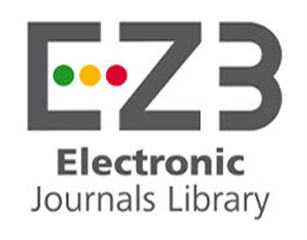THE “DIVINE CHILD” ARCHETYPE AS THE MATRIX OF OVERCOMING THE CRISIS OF THE SOCIO-HUMANITARIAN SPACE
Keywords:
archetype, Puer, divine child model of the sixties, literatureAbstract
In the article were made an attempt on materials of the writers of the sixties and the experience of the participants of the project “Psychological support for children from families of displaced persons” Canadian non-governmental organization Stabilization Support Services and the Union of women of Ukraine with the financial support of the British Embassy in the city of Mariupol to find out the particular representation of the archetype of the “divine child” as the matrix to overcome the crisis of the socio-humanitarian space.
Because in the public opinion, of particular importance are those constants of national life that affect the restoration of harmonious existence, the archetype of the “divine child” is regarded as such that affects the healing of humanity, is the unifying link between the past and the future, because any experience of childhood is not lost.
A study of the prose heritage of the sixties in the aspect of archetypes critics have allowed to define myth-poetical start of their creativity, rooted in prototipe of the collective unconscious. Individual author features the artistic transformation of archetypes due to several social, national and cultural factors. In the works of the sixties the properties of the archetype of the divine child is endowed with characters belonging to a generation of children of war. In the conditions of crisis of society, which is characterized by denationalization, material poverty and spiritual decline, they are the bearers of high moral character.
In addition, the idea that the archetype of the “divine child” is an inexhaustible source synthesizing creative energy that can revive each person individually and deformed disasters the society as a whole, found its confirmation in the process of the project participants that are from 15 January to 31 October 2016, worked with MSW in the city of Mariupol. Experts proven conclusively that since the child's psyche is very plastic, the child is able to transform the energy of fear and aggression in creative direction, to restore the resources to view the system of values, to acquire the ability to enjoy every bit of the universe.
References
Близнець Віктор. Звук павутинки // Віктор Близнець. Вибрані твори: [у 2 т.] / Віктор Близнець. — Київ : Веселка, 1983. — Т. 2. — 332 с.
Бовсунівська Т. Міфологема як ре- зистентний складник літератури / Т. Бовсунівська // Дивослово: Українська мова і література в на- вчальних закладах. — 2010. — № 8 (641). — С. 49–52.
Большакова А. Ю. Архетип — кон- цепт — культура / А. Большакова // Вопросы философии. — 2010. — № 7. — С. 47–57.
Вінграновський М. С. В глибині до- щів: повісті, оповідання / М. Вінгра- новський. — Київ: Рад. письменник, 1985. — 255 с.
Вірич Н. В. Особливості мистецької експлікації міфологеми “божествен- на дитина” / Н. В. Вірич // сб. на- учных трудов SWorld. Материалы междунар. науч.-практ. конф. “Сов- ременные направления теоретиче- ских и прикладных исследований ‘2013”. — Вып. 1. Т. 26. — Одесса: КУПРИЕНКО, 2013. — С. 33–41.
Зварич І. М. Міфологічна пара- дигма художнього мислення : ав- тореф. дис. ... д-ра філол. наук : спец. 10.01.06 “Теорія літератури” / І. М. Зварич. — Київ: Київський нац. ун-т ім. Т. Шевченка, 2003. — 38 с.
Колесник О. С. Міфопоетичне від- творення архетипу : автореф. дис. ... канд. філос. наук : спец. 09.00.08 “Ес- тетика” / О. С. Колесник. — Київ: Київський нац. ун-т ім. Т. Шевчен- ка, 2002. — 16 с.
Коршунова С. Літературний ар- хетип як спосіб пізнання тексту / С. Коршунова // Зарубіжна літе- ратура в навчальних закладах. — 2004. — № 6. — С. 3–4.
Кужільна Л. Естетика літературного шістдесятництва й астральні архетипи в неосяжності Шевченкового космосу / Л. Кужільна // Україн- ська мова і література в школі. — 2004. — № 2. — С. 47–50.
Левчук Л. Мистецтвознавча мо- дифікація психоаналізу / Л. Лев- чук // Психоаналіз: історія, теорія, мистецька практика. — Київ: Ли- бідь, 2002. — С. 128–157.
Лівіцька (Дудар) Н. Архетип “боже- ственної дитини” у ліриці Миколи Вінграновського / Н. Лівіцька // Література. Фольклор. Проблеми поетики: зб. наук. праць / Київсь- кий нац. ун-т ім. Т. Шевченка; ред- кол.: Г. В. Семенюк, О. С. Снитко, О. П. Івановська та ін. — Київ, 2012. — Вип. 37. — С. 189–195.
Морська Л. Ірраціональне пізнан- ня в філософській думці України : автореф. дис. ... канд. філос. наук : спец. 09.00.05 “Історія філософії” / Л. Морська. — Львів : Львівський нац. ун-т ім. Івана Франка, 2003. — 20 с.
Москаленко О. О. Міфологема ди- тинства в ліриці Ф. Гарсіа Лорки: дис. ... канд. філол. наук : 10.01.03 / О. О. Москаленко. — Сімферополь, 2014. — 244 с.
Татенко В. О. Сучасна психологія: теоретично-методологічні пробле- ми : навч. посіб. / В. О. Татенко. — Київ: НАУ-друк, 2009. — 228 с.
Тютюнник Г. Твори : [оповідання]: у 2 т. / Г. Тютюнник. — Київ: Молодь, 1984. — Т. 1. — 328 с.
Яценко Т. С. Основи глибинної пси- хокорекції: феноменологія, теорія і практика : навч. посіб. / Т. С. Яцен- ко. — Київ: Вища шк., 2006. — 382 с.
Юнг Карл Густав. Архетипы коллек- тивного бессознательного / Карл Густав Юнг ; пер. с нем. Т. А. Ребе- ко // Структура психики и архе- типы. — Москва: Академ. проект, 2007. — (Психологические техноло- гии). — С. 217–242.
Юнг Карл Густав. Божественный ребенок / Карл Густав Юнг ; пре- дисл. П. С. Гуревич ; пер. с нем. Д. В. Дмитриева, Т. А. Ребеко. — Москва: Олимп, АСТ-ЛТД, 1997. — 400 с.











